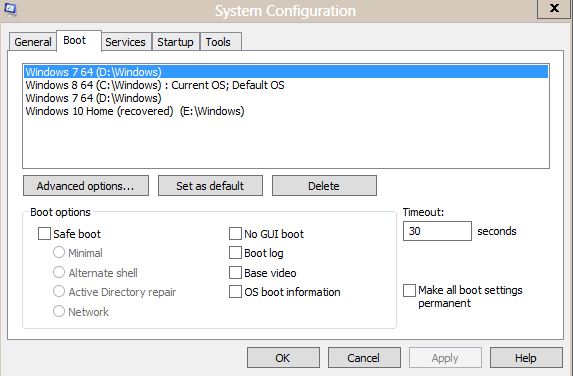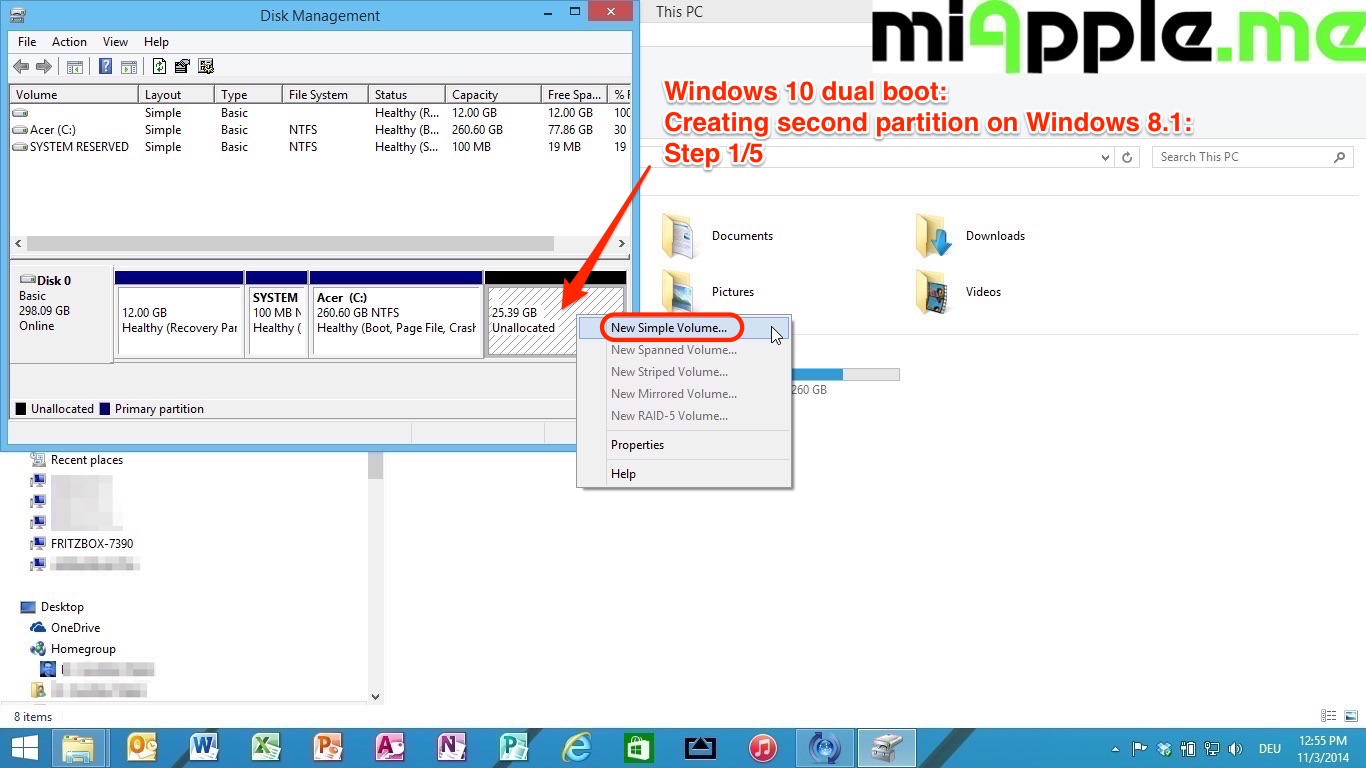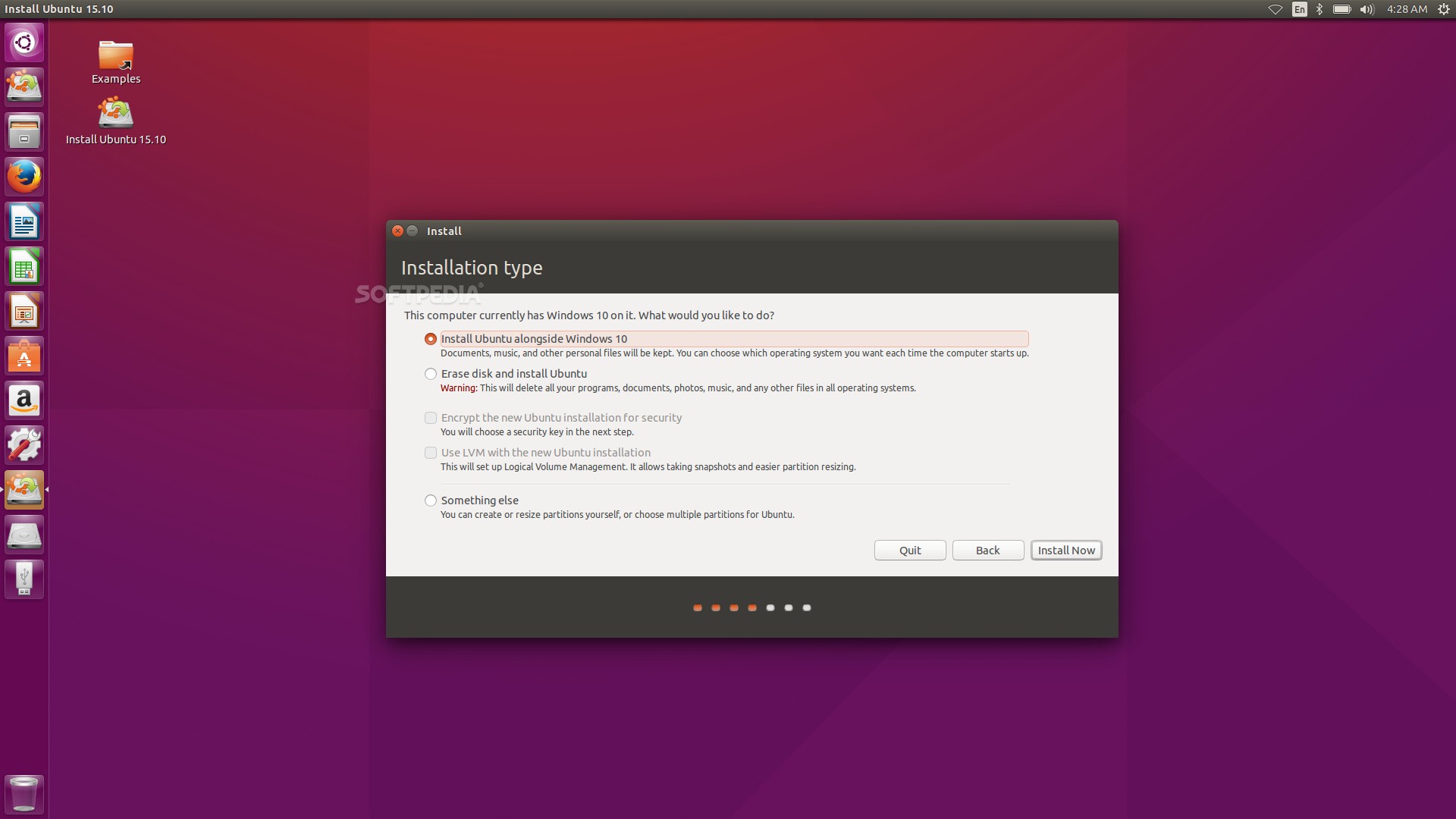This guide is about boot partitions for the following Windows versions: Windows XP, Vista, 7, 8, 8.1 and 10
Move system partition to primary disk? So I recently formatted my Windows 8.1 system and installed Windows 10. But it seems that the setup decided to set my System parition to a separate HDD (G: ) and put the bootmgr and all the boot files there, instead of using the left-over 350MB System Reserved partition on my primary SSD that Windows 8.1.
Contents
- 1 What is a boot partition?
- 7 More Information
What is a boot partition?
A Windows boot partition is the partition that holds the necessary files for the Windows operating system (either XP, Vista, 7, 8, 8.1 or 10).
A boot partition is also known as a boot volume.
Whenever you install another operating system, e.g. Windows Vista if you already have Windows XP installed or Ubuntu (Linux) next to your already installed Windows Vista, you’ll have two partitions. This is called a dual-boot or a multi-boot configuration.
For each operating system you install, you’ll have boot partitions for each. A system partition will contain the hardware-related files.
You can identify which partition is a boot partition or a system partition, in Windows Vista and Windows 7, using the Disk Management wizard:
To do so, follow these steps:
- Open Disk Management from Control Panel (System and Security > Administrative Tools > Computer Management)
- At the Status column, the boot partitions are identified using the (Boot) word, while the system partitions are with the (System) word.
You can create a new partition on your PC if you have unallocated space disk available on the hard disk.

If the current installed operating system occupies the entire hard disk space, you’ll need to shrink or delete the partition used by that operating system.
Boot partition and System partition
The system partition contains the files that your Windows needs to start (the Boot Configuration Data or BCD). The reserved partitions (or the system partitions) do not have a letter assigned to them. You can see these partitions with a Partition Editor software or through Disk Management.
The boot partition is the partition that holds the Windows installation.
Create boot partition in Windows XP
You must run all the steps as an Administrator on your Windows XP PC or as any user that has administrative rights to the system.
To create a new boot partition on a Windows XP computer, follow the steps below:
- Boot into Windows XP
- Click Start
- Click Run
- Type
compmgmt.mscto open Computer Management - Click OK or press Enter
- Go to Disk Management (Computer Management (Local) > Storage > Disk Management)
- Right-click on a unallocated space available on your hard disk and click New Partition
- In the New Partition wizard, follow the instructions to complete the process
You can also create a partition with the diskpart utility using Command Prompt:

- Open Command Prompt
- Type
diskpartand press Enter - Type
list diskand press Enter. You will now see a list of available disks. Note the number of the disk that you want to use as a new partition. - Type
select disk x, wherexis the number of the disk that you want to use - Press Enter
- Type the following commands, depending on which type of partition you want to create:
create partition primary size=SIZE_IN_MBto create a primary partitioncreate partition extended size=SIZE_IN_MBto create an extended partitioncreate partition logical size=SIZE_IN_MBto create a logical partition
where
SIZE_IN_MBshould be the size of the partition you want to create, in MB.
Create boot partition in Windows Vista
All the below steps must be performed as an Administrator or as any user with administrative rights to the system.
If you install different versions of Windows, such as Vista and 7, you need to install Windows Vista first. The earliest version of Windows must be installed first on your PC.
To create a new boot partition in Windows Vista, follow these steps:
- Boot into Windows Vista
- Click Start
- Click Control Panel
- Click System and Maintenance
- Click Administrative Tools
- Click Computer Management
- Under the Storage section, click Disk Management
- At this step you should see how much unallocated space you have on your hard disk
- Right-click on the unallocated box and click New Simple Volume
- At the New Simple Volume wizard, click Next
- Type the size of the boot volume you want to create, in MB, and click Next
- Choose a drive letter for the boot volume and click Next
- At the Format Partition screen, you can select Do not format this volume and click Next to format the partition later on. If you want to format the partition now, do not select Do not format this volume, and click Next.
- Click Finish
If you don’t have enough unallocated space available, you either need to shink or delete already used partitions.
To shrink a boot volume (or boot partition), follow these steps:
- Right-click on the volume you want to shrink
- Click Shrink Volume
- Follow the instructions to complete the process
Create boot partition in Windows 7
The steps to create a boot partition in Windows 7 are similar to those of Windows Vista.
You must perform these steps as an Administrator
If you install multiple Windows versions, the first Windows version installed on your PC must be the earliest, e.g. install Windows Vista and then Windows 7 and not the other way around
The steps to create a new boot partition in Windows 7 are:
- Boot into Windows 7
- Click Start, then click Control Panel
- Go to System and Maintenance and click Administrative Tools
- Click Computer Management
- If you’re prompted for the Administrator password, enter it and click OK or press Enter
- At the Storage section, click Disk Management
- Right-click on the unallocated space box and click New Simple Volume
- Click Next
- Type the size you want for this new boot partition you’re creating now
- Click Next
- Type the drive letter for the partition. Make sure it’s unique or leave the default as suggest by Windows 7.
- Click Next
- At the Format Partition dialog, choose to either format the partition now or later and click Next. To format it later, check the Do not format this volume option and then click Next.
- Click Finish
If you don’t have enough unallocated space available, you either need to shink or delete already used partitions.
Set Boot Partition Windows 10 Uefi
To shrink a boot volume (or boot partition), follow these steps:
- Right-click on the volume you want to shrink
- Click Shrink Volume
- Follow the instructions to complete the process
Create boot partition in Windows 8
To create a new boot partition on a Windows 8, follow the steps below.
If you perform these steps to install Windows 7 along with Windows 8, it won’t work. You need to install Windows 7 first, use Disk Management from Windows 7 to create the boot partition and then install Windows 8.
You can install Windows 10 along with Windows 8. Use the Disk Management from Windows 8 to install Windows 10 on a new partition.
The steps to create a new boot partition in Windows 8 are:
- Boot into Windows 8
- Press the Windows key and R to open Run
- Type
diskmgmt.mscto open Disk Management - Click OK or press Enter
- Check if you have any unallocated space available on the hard disk. If so, right-click on that unallocated space and click New Simple Volume.If you don’t have unallocated space space, you can shrink a volume Windows 8 already uses. To do so, right-click on the volume and click Shrink Volume.
- Continue with the instructions to finish the process
Create boot partition in Windows 10
To create a new boot partition on a Windows 10, follow the steps below.
If you perform these steps to install Windows 7 along with Windows 10, it won’t work. You need to install Windows 7 first, use Disk Management from Windows 7 to create the boot partition and then install Windows 10.
You can install Windows 10 along with Windows 8. Use the Disk Management from Windows 8 to install Windows 10 on a new partition.
The steps to create a new boot partition in Windows 10 are:
- Boot into Windows 10
- Open the Start Menu
- Type
diskmgmt.mscto access Disk Management - Click OK or press Enter
- Check if you have any unallocated space available on the hard disk. If so, right-click on that unallocated space and click New Simple Volume.If you don’t have unallocated space space, you can shrink a volume Windows 8 already uses. To do so, right-click on the volume and click Shrink Volume.
- Continue with the instructions to finish the process
More Information
Support Links
- Easy Recovery Essentials for Windows – our repair and recovery disk.
It’s an easy-to-use and automated diagnostics disk. It’s available for Windows 8, Windows 7 and Windows Vista. It’s also available for Windows XP and Windows Server.Read more at Windows Recovery Disks.
- The NeoSmart Support Forums, member-to-member technical support and troubleshooting.
- Get a discounted price on replacement setup and installation discs: Windows XP, Windows Vista, Windows 7, Windows 8, Windows 10.
Applicable Systems

This Windows-related knowledgebase article applies to the following operating systems:
- Windows XP (all editions)
- Windows Vista (all editions)
- Windows 7 (all editions)
- Windows 8 (all editions)
- Windows 8.1 (all editions)
- Windows 10 (all editions)
- Windows Server 2003 (all editions)
- Windows Server 2008 (all editions)
- Windows Server 2012 (all editions)
This article shows how to setup your primary partition as active using the diskpart utility.
This how-to article applies for any of the following Windows versions: Windows XP, Vista, 7, 8 or 8.1
Contents
- 6 More Information
The following instructions are done through Command Prompt, which you can use if you can’t boot into Windows to set the partition as active.
However, you can use Disk Management if you can boot into Windows and do the necessary changes to your partition:
- Click Start
- Click Control Panel
- Click System and Security
- Click Administrative Tools
- Double-click Computer Management
- Click Disk Management under the Storage tab from the left
- Right-click on the partition you want to set as partition and click Mark Partition as Active
- Click Yes
Use diskpart from Easy Recovery Essentials
You can use Command Prompt from Easy Recovery Essentials and run the diskpart utility to make the necessary modifications to a partition:
- Burn the ISO Image. Follow our instructions on how to burn a bootable ISO image. If you’d like to have a recovery USB instead, follow our instructions on how to make a recovery USB.
- Boot Easy Recovery Essentials from the CD, DVD or USB
- Select Launch Command Line
To download Easy Recovery Essentials, click here.
Set partition as active on Windows XP
In order to use diskpart and set your computer’s primary partition as active again, use your Windows XP installation disc to start Recovery Console.
If you don’t the original Windows XP CD, go to Use diskpart from Easy Recovery Essentials.
- Insert the Windows XP installation CD
- Restart the computer
- Press any key at the “Press any key” screen
- Press R at the Welcome to Setup screen
Windows XP Press R for Recovery Console
- Type
1to log into your Windows Installation and press Enter - After Recovery Console logged into the Windows Installation, type
diskpart. Hit Enter to load the diskpart utility. - Type
list partition, press Enter - Type
select partition X, whereXis your partition - Press Enter
- Type
activeand press Enter - Restart your computer
Set partition as active on Windows Vista
Marking a partition as active on Windows Vista systems follows the same steps as the steps for Windows 7 or Windows 8.
Windows Change Active Partition
You need to use the original disc (Windows Vista install DVD) to access Command Prompt and run diskpart.
If you don’t the original Windows Vista DVD, go to Use diskpart from Easy Recovery Essentials.
- Insert the installation DVD and boot from it (press any key at the “Press any key” screen)
- Select the language and keyboard method and click Next
Windows Vista Repair Your Computer Menu
- Click Repair your computer
- Click Command Prompt
- Once Command Prompt has loaded, type the following commands and press Enter after each:
Where
0is the disk listed by thelist diskcommand. - Type:
- Press Enter
- Type:
Where
1is your partition. - Press Enter
- Type:
- Press Enter
Set partition as active on Windows 7
To set the primary partition to be active on your Windows 7 computer, follow these steps:
If you don’t the original Windows 7 DVD, go to Use diskpart from Easy Recovery Essentials.
- Insert the Windows 7 DVD
- Restart your computer
- Press any key to boot from the DVD
- At the Install Windows screen, either click Next and then Repair your computer or press the Shift and F10 keys to open Command Prompt.
Windows 7 System Recovery Options Screen
- Once in Command Prompt, type these commands and press Enter after each:
- Type
select disk 0, where0is your computer’s disk that has the partition. - Press Enter
- Type
list partitionto have diskpart list all partition on the select disk and hit Enter to run the command - Type
select partition 1, where1is the number of the partition you want to set as active. Press Enter - Type
activeto mark the partition as active. Press Enter - Your partition is now active. Type
exit, hit Enter and restart your computer.
Set partition as active on Windows 8
To set a primary partition as active on a Windows 8 system, follow these steps:
If you don’t the original Windows 8 DVD/USB, go to Use diskpart from Easy Recovery Essentials.
- Insert the Windows 8 or Windows 8.1 USB and boot form the media
- Click Repair your computer
- Click Troubleshoot
- Click Command Prompt
- When at Command Prompt, type these commands:
- Type
select disk 0, replace0with your computer’s primary disk - Type
list partition - Type
select partition 1, replace1with the partition’s letter that you want to set as active - Type
active - Type
exit - You can restart your computer now
More Information
Linked Entries
Support Links
Change Active Partition Windows 10
- Easy Recovery Essentials for Windows – our repair and recovery disk.
It’s an easy-to-use and automated diagnostics disk. It’s available for Windows 8, Windows 7 and Windows Vista. It’s also available for Windows XP and Windows Server.Read more at Windows Recovery Disks.
- The NeoSmart Support Forums, member-to-member technical support and troubleshooting.
- Get a discounted price on replacement setup and installation discs: Windows XP, Windows Vista, Windows 7, Windows 8.
Applicable Systems
This Windows-related knowledgebase article applies to the following operating systems:
- Windows XP (all editions)
- Windows Vista (all editions)
- Windows 7 (all editions)
- Windows 8 (all editions)
- Windows 8.1 (all editions)